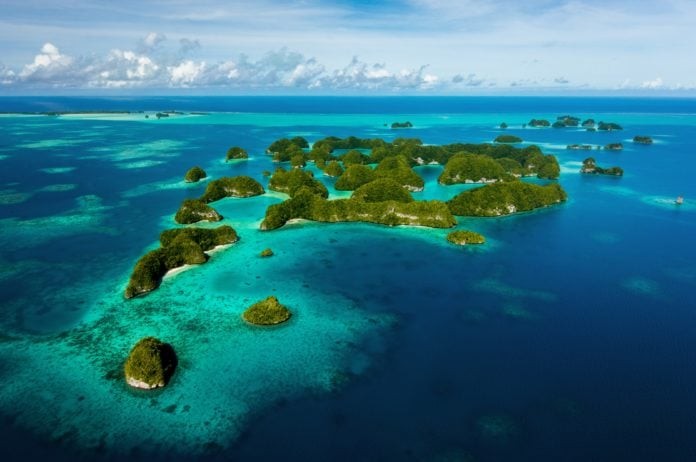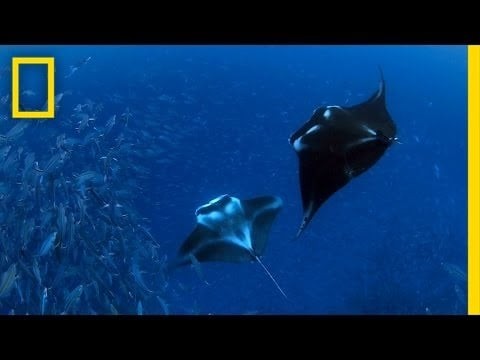Palau’s tourism industry has been in the news lately. Palau has long been a haven for divers and nature lovers. As a group, divers and nature lovers are aware of their surroundings and do what they can to preserve it. Until a few years ago, they made up the majority of the tourist. Then travel groups from China started to come in.
In the minds of some people, the increased tourism was getting out of hand. Beaches that used to have a few dozen people now had many hundreds. Photographs of tourist illegally fishing and harassing the marine life went viral on social media. Prices for accommodations were going up as tour groups would buy up all the rooms in a hotel. Then at first a small shift, Chinese expats were buying up restaurants and shops. Then larger companies from China had secured land with 99-year leases to be the sites for sixty resort complexes. The Chinese tour companies were no longer bringing their guest to the local properties, but to those that their fellow countrymen owned.
While the tourism numbers were going up, it was not very clear if the Palauan people were receiving the majority of the income. Last year, the famous jellyfish lake was closed. Too many visitors were cited as one of the reasons the jellyfish population was dying off. Conservationist was a concern with the manner the tourist were leaving the beaches and waters. Mass Chinese tourist does not have a good reputation in the international travel community. Thailand and China had to make an agreement that before they left China a tourist to Thailand had to agree to a standard of conduct. The travel industry of Palau cut back by 50% the number of flights from China last year to stem the overflow. Recently, China stopped the rest.
In what seems to be a political move, China has reminded their tour companies that Palau is not approved destinations and fines up to $60,000 per group could be levied against the tour companies. The Chinese tourist is all but gone. Which means we, divers and nature lovers, get our perfect destinations back. So let’s go diving.
Location
Palau – 5 Sites Not To Miss
Palau is a great diving destination that has both land-based resorts and a liveaboard industry. Both have their strong points, however, it needs to be said that they do all dive the same sites. If you figure five days of diving in a week vacation and three dives a day on most days, you will not repeat a dive site, unless you really want to. Most of the sites are worth a second dive, but doing so may mean missing something just as exciting. Here is a list of five must dive sites out of the many must dive sites of Palau:
- Blue Corner: One of the best known and high energy dive sites in the world, if you are an advanced and experienced diver, this is a must do dive site. Blue Corner is a plateau at 45-60 feet (15-20 meters) that has a wall. When there is no current it a wonderful dive with many fans and coral formations. However, the best time to dive this site is with a current. Current direction and strength will determine the location you will start your dive. The current in-bound to the lagoon will have visibility over 100 feet (30 meters), the outbound current has less visibility but still over 60 feet(20 meters). The general dive plan is to start at one location, drift onto the plateau and then deploy your reef hook. If you are not familiar with a reef hook, it a simple hook that you snag on a rock or dead coral. You then let out an attached line and float in the current like a kite in the wind. The reef hook is said to have been developed in Palau for situations like this. While attached you are using little energy extending your dive time as manta rays and as many as thirteen species of sharks pass by.
- German Channel: You normally dive this dive site at the mouth of the channel. The open ocean floor rises sharply from 1000′ (330 m) to 120 feet (40 m) then a gentle slope to about 30 feet (10 meters). The main focus of this dive is a number of large rocks at about 60 feet (18 meters). These have been turned into cleaning stations. You start your dive at one of two dive markers and follow the slope until you reach the rocks. Near them, you will find a place to hang out and wait for action on the cleaning stations. You will likely be out of the current. To complete your dive you will swim towards the other dive marker. Because the channel is shallow and there is boat traffic divers do not normally dive in the channel itself. The German channel was man made over a hundred and ten years ago. The nearby island of Angaur was plentiful in guano which is a valuable source of phosphate. Guano is the excrement of seabirds, cave-dwelling bats, and seals. For safety and time reasons, the German company mining the Guano cut a passage in the reef, so they could travel directly to Koror. German Channel is also an outstanding night dive site.
- Blue Holes: Blue Holes sits in a shallow reef just 3 to 6 feet (1 to 2 meters) deep. The reef wall drops down to 130 feet (40 meters). In the top of the reef are four openings that reveal a cavern with a sandy bottom 130 feet (40 meters) below. There are two exits to the outside wall at 45 feet (15 meters) and a large opening starting at 85 feet (27 meters). Divers should be warned that there is a second exit at 85 feet (27 meters) that leads to a cave system. Outside of the cavern’s exits to the wall, divers may find a current. An outgoing current will take the divers to Blue Corner.
- Ulong Channel: If any dive site can challenge Blue Corner as the best drift dive, Ulong would be it. The dive starts to the north of the island’s channel with divers going down to about 60 feet (20 m). Most the time it is a slow causal drift to the entrance to the channel. Most dive plans have the diver hook in when they reach the entrance. The entrance will have stingrays, schools of jacks, batfish, Gray Reef Sharks, snappers, and barracuda. During the months of April, May, June, and July, thousands of groupers gather here to spawn. Activity is intense around the full moon. When the group of divers is ready, they will release their hooks and drift into the channel. Many have called it a roller coaster ride. At the opposite end of the channel will be more sharks waiting for the catch to come in. Visibility inbound will be around 100 feet (30 meters). The current is known to suddenly switch directions, so groups should stick together.
- Helmet Wreck: There are a number of wrecks around Palau, however, the helmet wreck is the one most frequently dived. The ship is upright and just a few minutes for most of the dive shops. The ship sits on a slope, with the stern in 45 feet (15 meters) of water. Dive boats attach to a buoy at the stern and divers follow the line to the ship. The bow is at 110 feet (35 meters). Wreck certified divers can penetrate the wreck. The name of the ship is unknown but is named from the cargo of helmets found.
Now Is The Time
Palau’s President Tommy Remengesau has asked for help from the US and Japan to improve tourism numbers from those countries. He has stated he will meet with representatives from South Korea and the EU requesting their assistance as well. We, as divers, can do our part as well by making our travel plans to dive the outstanding dive sites of Palau.


